
How to Use lm393_cb_am_thanh: Examples, Pinouts, and Specs
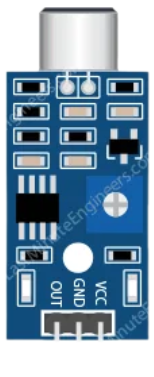
 Design with lm393_cb_am_thanh in Cirkit Designer
Design with lm393_cb_am_thanh in Cirkit DesignerIntroduction
The LM393 is a dual comparator integrated circuit (IC) designed for a wide range of applications, including audio signal processing. It features two independent, high-speed voltage comparators with an open-collector output, making it highly versatile and easy to interface with other components in a circuit. The LM393 is commonly used in audio systems, signal detection, voltage level sensing, and waveform generation.
Explore Projects Built with lm393_cb_am_thanh
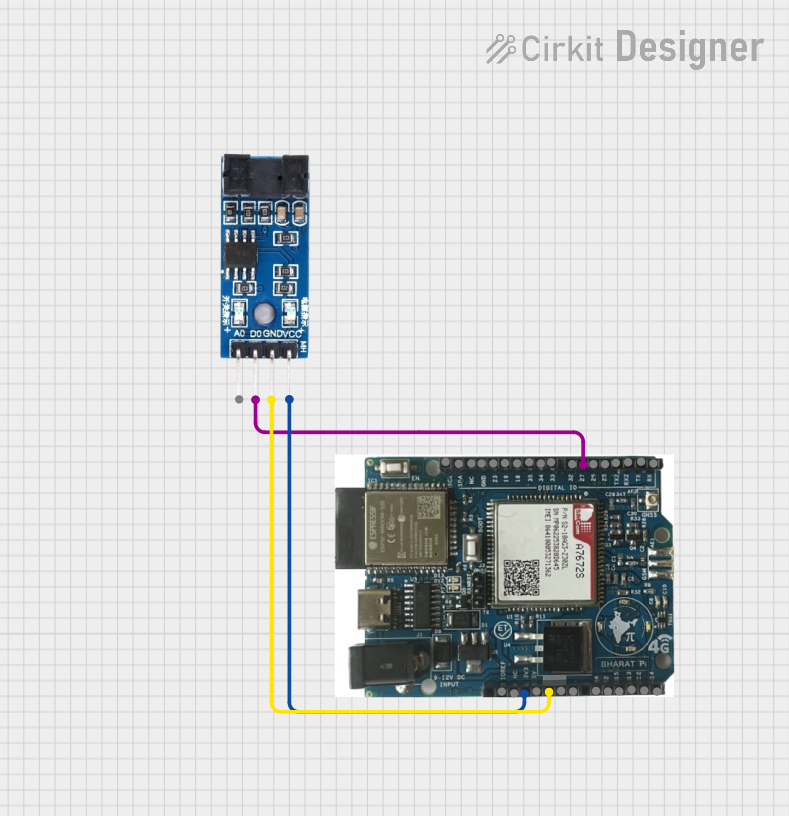
 Open Project in Cirkit Designer
Open Project in Cirkit Designer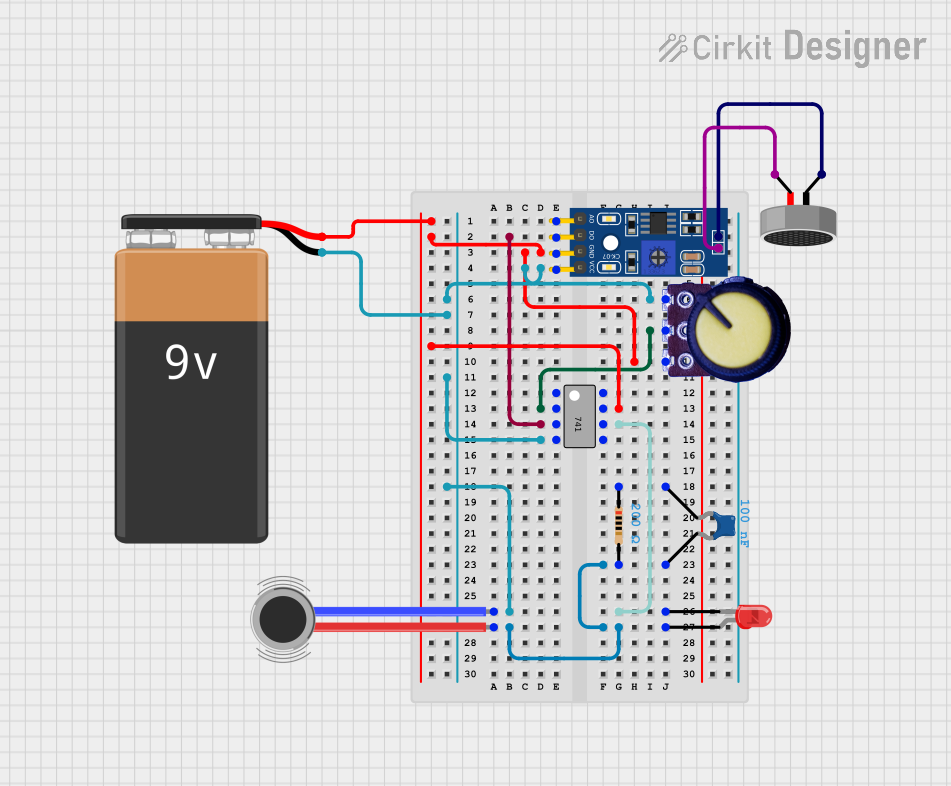
 Open Project in Cirkit Designer
Open Project in Cirkit Designer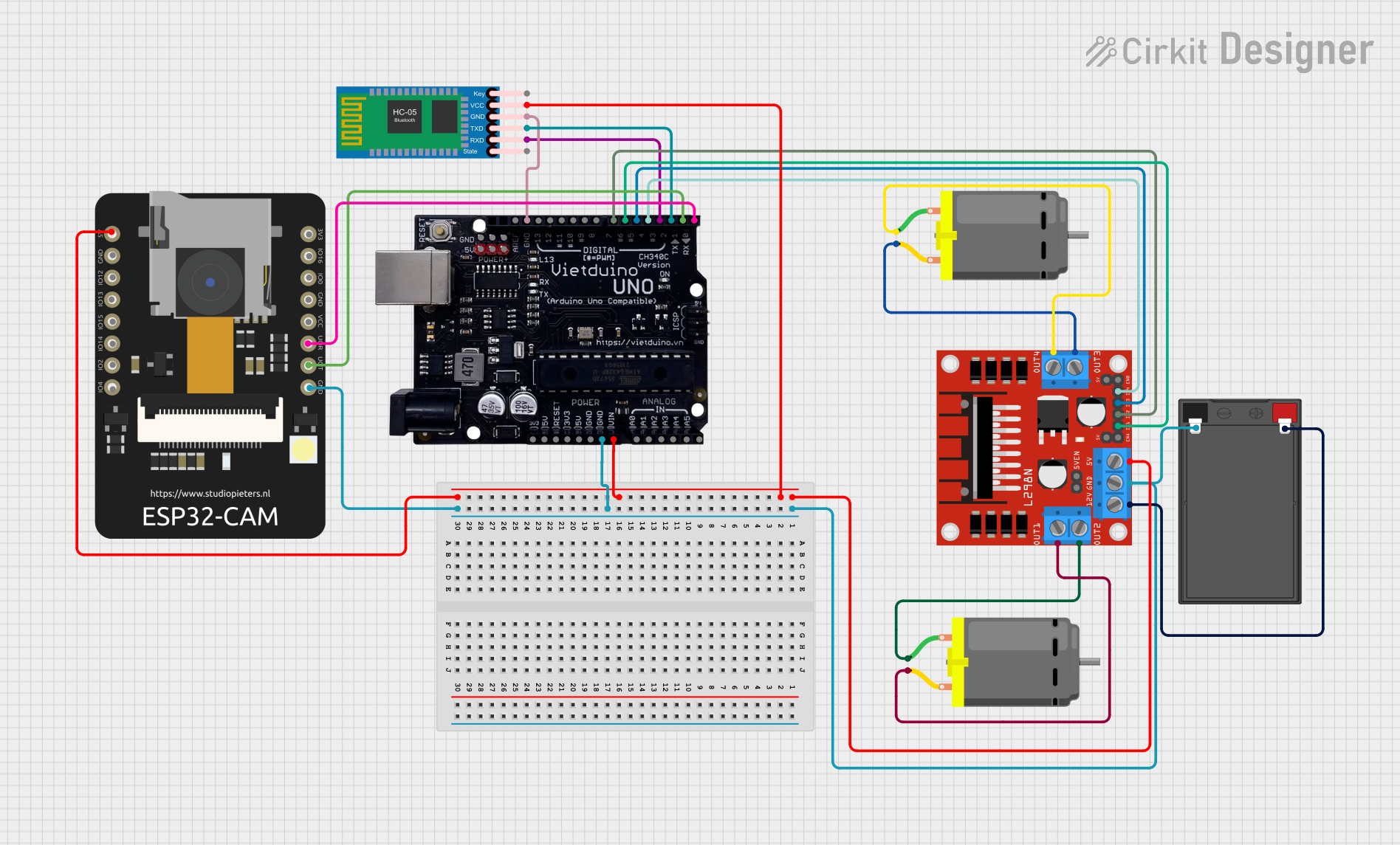
 Open Project in Cirkit Designer
Open Project in Cirkit Designer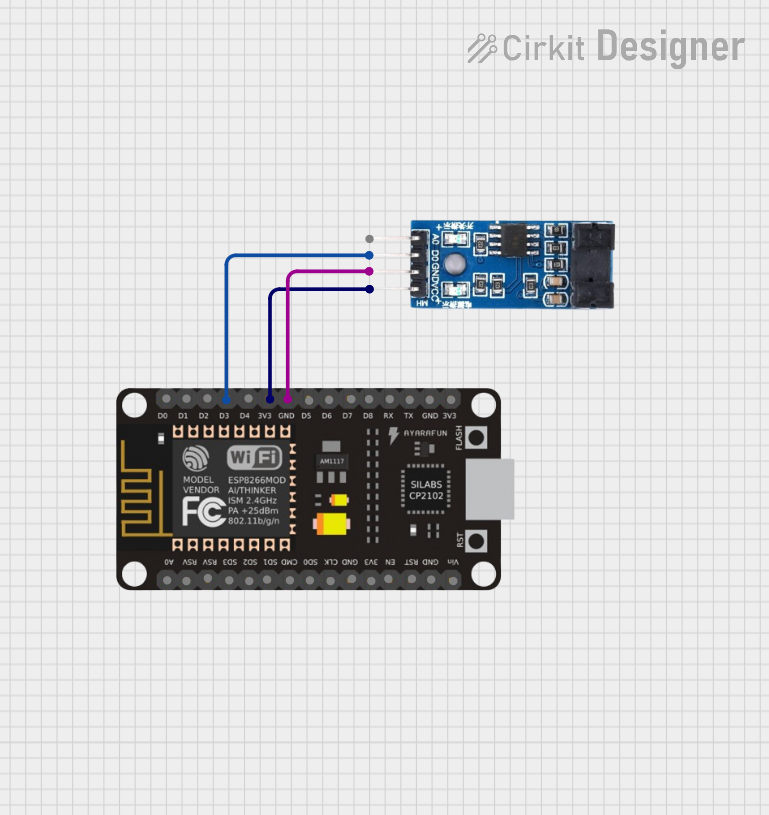
 Open Project in Cirkit Designer
Open Project in Cirkit DesignerExplore Projects Built with lm393_cb_am_thanh

 Open Project in Cirkit Designer
Open Project in Cirkit Designer
 Open Project in Cirkit Designer
Open Project in Cirkit Designer
 Open Project in Cirkit Designer
Open Project in Cirkit Designer
 Open Project in Cirkit Designer
Open Project in Cirkit DesignerCommon Applications:
- Audio signal processing and filtering
- Zero-crossing detection
- Voltage level monitoring
- Pulse-width modulation (PWM) circuits
- Oscillator circuits
Technical Specifications
The LM393 is a robust and reliable IC with the following key specifications:
| Parameter | Value |
|---|---|
| Supply Voltage (Vcc) | 2V to 36V |
| Input Offset Voltage | ±5mV (typical) |
| Input Bias Current | 25nA (typical) |
| Response Time | 1.3µs (typical) |
| Output Type | Open-collector |
| Operating Temperature | -40°C to +85°C |
| Package Types | DIP-8, SOIC-8 |
Pin Configuration and Descriptions
The LM393 is typically available in an 8-pin package. Below is the pinout and description:
| Pin Number | Pin Name | Description |
|---|---|---|
| 1 | Output 1 | Output of the first comparator |
| 2 | Inverting Input 1 | Inverting input of the first comparator |
| 3 | Non-Inverting Input 1 | Non-inverting input of the first comparator |
| 4 | GND | Ground (0V reference) |
| 5 | Non-Inverting Input 2 | Non-inverting input of the second comparator |
| 6 | Inverting Input 2 | Inverting input of the second comparator |
| 7 | Output 2 | Output of the second comparator |
| 8 | Vcc | Positive power supply voltage |
Usage Instructions
The LM393 can be used in a variety of circuits. Below are general guidelines and an example of how to use it in an audio signal processing application.
How to Use the LM393 in a Circuit
- Power Supply: Connect the Vcc pin (Pin 8) to a positive voltage source (e.g., 5V or 12V) and the GND pin (Pin 4) to ground.
- Inputs: Provide the input signals to the inverting and non-inverting pins of the comparator. For example:
- Connect the audio signal to the non-inverting input.
- Use a reference voltage (e.g., from a voltage divider) on the inverting input.
- Output: The output pins (Pin 1 and Pin 7) are open-collector, so you need a pull-up resistor (e.g., 10kΩ) to the positive supply voltage. The output will pull low when the non-inverting input voltage exceeds the inverting input voltage.
- Interfacing: The open-collector output allows the LM393 to interface with other logic circuits or microcontrollers.
Important Considerations
- Pull-Up Resistor: Always use a pull-up resistor on the output pins to ensure proper operation.
- Input Voltage Range: Ensure the input voltages are within the common-mode range (0V to Vcc - 1.5V).
- Decoupling Capacitor: Place a decoupling capacitor (e.g., 0.1µF) near the Vcc pin to reduce noise and improve stability.
- Audio Applications: When processing audio signals, use appropriate filtering components (e.g., capacitors and resistors) to condition the signal.
Example: Using LM393 with Arduino UNO
Below is an example of using the LM393 to detect an audio signal and interface it with an Arduino UNO.
Circuit Setup:
- Connect the audio signal to the non-inverting input (Pin 3).
- Use a voltage divider to set a reference voltage on the inverting input (Pin 2).
- Connect the output (Pin 1) to a digital input pin on the Arduino (e.g., Pin 2).
- Use a 10kΩ pull-up resistor on the output pin.
Arduino Code:
// LM393 Audio Signal Detection Example
// Connect LM393 output to Arduino digital pin 2
const int lm393Pin = 2; // LM393 output connected to digital pin 2
const int ledPin = 13; // Onboard LED for signal indication
void setup() {
pinMode(lm393Pin, INPUT); // Set LM393 output pin as input
pinMode(ledPin, OUTPUT); // Set LED pin as output
Serial.begin(9600); // Initialize serial communication
}
void loop() {
int signal = digitalRead(lm393Pin); // Read the LM393 output signal
if (signal == HIGH) {
// If signal is detected, turn on the LED
digitalWrite(ledPin, HIGH);
Serial.println("Audio signal detected!");
} else {
// If no signal, turn off the LED
digitalWrite(ledPin, LOW);
}
delay(100); // Small delay for stability
}
Troubleshooting and FAQs
Common Issues and Solutions
No Output Signal:
- Ensure the pull-up resistor is connected to the output pin.
- Verify that the input voltages are within the specified range.
Unstable Output:
- Add a decoupling capacitor near the Vcc pin to reduce noise.
- Check for proper grounding in the circuit.
Incorrect Comparisons:
- Double-check the reference voltage and input signal connections.
- Ensure the comparator inputs are not floating.
Arduino Not Detecting Signal:
- Verify the connection between the LM393 output and the Arduino input pin.
- Ensure the Arduino pin is configured as an input in the code.
FAQs
Q1: Can the LM393 handle AC signals?
A1: Yes, the LM393 can process AC signals, but you may need to condition the signal (e.g., using capacitors) to ensure it stays within the input voltage range.
Q2: What is the purpose of the pull-up resistor?
A2: The pull-up resistor ensures the open-collector output transitions correctly between HIGH and LOW states.
Q3: Can I use the LM393 with a 3.3V system?
A3: Yes, the LM393 can operate with supply voltages as low as 2V, making it compatible with 3.3V systems.
Q4: How do I improve response time for high-speed signals?
A4: Minimize parasitic capacitance and use low-value pull-up resistors to improve response time.